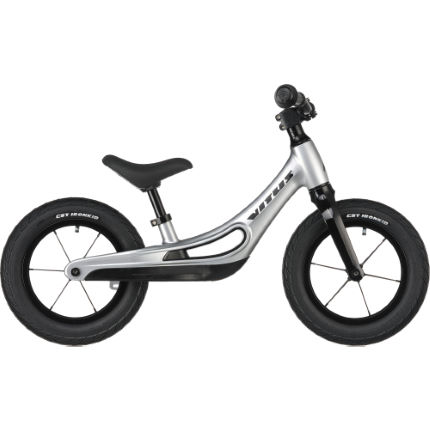
Biking is a demanding activity, and keeping the right balance can be difficult. Various elements impact your stability on a bike, such as the front-loaded steering geometry, the center of mass, and the gyroscopic effect. All these components play a crucial role in helping you keep a stable balance when you’re cycling.
Read on to learn more about the different factors that can affect your balance while cycling. Once you have the answers to these questions, you’ll be well on your way to riding a bicycle.
Affect Bicycle Balance
Bicycle balance is an essential aspect of cycling, and various factors can affect it. Here are some of the factors that can affect bicycle balance:
- Speed: At low speeds, it’s harder to balance a bike because the wheels have less gyroscopic stability. However, at high speeds, the wheels create more stability and make it easier to balance.
- Weight distribution: The weight distribution of the rider and the bike affects the balance. If the rider leans too far forward or backward or if the bike is weighted unevenly, it can affect the balance and make it harder to ride.
- Steering: Steering is a critical factor in bicycle balance. A rider must steer in a way that helps to maintain balance. Oversteering or sudden changes in direction can cause a loss of balance.
- Wind and weather: Strong winds and rain can make it more challenging to maintain balance on a bike. Gusts of wind can push the rider off balance, and slippery roads can make it harder to control the bike.
- Road conditions: Rough or uneven terrain can make it more difficult to balance a bike. Potholes, gravel, and other obstacles on the road can cause the bike to wobble and can make it harder to maintain balance.
- Rider experience: The experience level of the rider can also affect bicycle balance. More experienced riders are generally better at maintaining balance, making corrections, and avoiding obstacles that could affect the balance.
- Bike design: The design of the bike, including the frame geometry, wheelbase, and fork rake, can affect the balance. Bikes with a longer wheelbase and more relaxed geometry tend to be more stable, while bikes with a shorter wheelbase and more aggressive geometry tend to be less stable.
Maintaining bicycle balance is influenced by various factors, and riders need to be aware of these factors to improve their balance and overall riding experience.
Front-Loaded Steering Geometry
The shape of a bike’s front-loaded steering geometry determines how much lean is applied to the front wheel. Depending on the lean angle L, the forkpoint can fall further into the bike than the front wheel would otherwise be. BICYC has calculated a model for the minimum forkpoint height in the plane of a bicycle. They then determined the “effective vertical” of a bicycle and the slope of the height versus steering-angle curve.
Bicycle stability theories invoke the gyroscopic action of the front wheel. The front wheel precesses around the steering axis to counteract the tilt caused by the rider. For example, a rolling hoop can run stably with a front wheel steered into the direction of the fall. For the sake of illustration, bicycles are considered hoop-like, with a trailer attached to them.
The weight distribution is also important. If the front wheel is lighter, steering will be lighter. This may increase the likelihood of oversteering. It will also reduce tyre grip, which can be dangerous in slippery conditions. A bike with reduced front wheel weight may also exhibit erratic behavior, and will require more effort to control. While a rear wheel with the same weight distribution can help maintain balance, it is not as stable at higher speeds.
Center of Mass
When attempting to balance a bicycle, it is vital to understand your bike’s Center of Mass. This is the dominant force that keeps the bicycle on a level plane. You may recall the concepts you studied in high school physics class. You must think in reverse to understand how the center of mass works in normal bicycle balance. The Pedal Magic process was developed to help explain the concept. By understanding the Center of Mass, you can master the skills necessary to maintain a steady bicycle balance.
The center of mass is a key factor in the bike’s balance. The bicycle’s balance is dependent on the location of the rider and bicycle’s center of mass. It is also crucial to consider the friction that your tires experience during your ride. The center of mass is the most critical point for proper bicycle balance. Once you learn to understand this fundamental concept, you can design a bicycle that maintains the proper balance.
To learn how to maintain a stable bicycle balance, you must first learn how to control the center of mass and the pressure on the center of the bike. By observing how the center of mass moves during the balancing task, you will be able to identify the optimal bicycle. If the rider is unable to maintain a stable bicycle balance, a bicycle designed for that purpose should increase the cross-correlation between the center of mass and the center of pressure.
Torque Lags Behind Where You Push
When cycling, the amount of torque you generate is not always equal to the amount of force you exert. The amount of torque you generate depends on your cadence, which is the speed at which you pedal. A lower cadence puts more strain on your muscles while cycling faster will shift more load to your cardiovascular system. Dr. Xavier Disley, a cycling efficiency researcher, has studied the torque curves of various bikes and the effects of cadence on cycling performance.
Gyroscopic Effect
Whether or not you fall off your bicycle depends on the way you ride it. While gyroscopic forces are a part of bicycle movement, their effect on balance is small. The weight of the rider and other factors outweigh their effects. For safety reasons, you should be especially aware of your cycling technique and stance. To learn more about bicycle balance, read the following articles. This article will introduce gyroscopic forces.
A spinning wheel wants to remain spinning about its axis. In the same way, planet Earth stays aligned to its spin axis. A gyroscopic effect on bicycle balance is more obvious in motorcyclists than in everyday cyclists. In addition, everyday bicycle wheels are lighter than motorbike wheels and cycling at a leisurely pace does not cause the gyroscopic effect. Therefore, everyday cyclists do not notice it.
When you lean your bicycle, you are causing the combined center of mass to move left. If this action occurred in space, the bike would lean to the right, but friction prevents this and pushes it to the left. Even though this effect is small, it is significant enough to explain why it is so difficult to balance a bicycle using this technique alone. So, if you are unsure of what this effect is, consider the bicycle in your hand: the weight of its parts is causing its balance.
Weight of Rider
The weight of the rider affects bicycle balance. When a rider weighs 60kg (130 lbs), he has 30kg pushing against each wheel. However, the weight of the bicycle is not included in the equation. This is because the spokes prevent the wheels from buckling. This weight-balance effect is small, but it’s essential to understand how the weight of the rider affects bicycle balance.
The size of the rider will determine the balance of the bike and the power produced. Larger riders have more mass to produce force, which means they’re able to push harder. Lighter riders have less mass, and they can’t generate as much power. However, a heavier rider can expect to get further up compared to the lighter one after twenty minutes. The lighter rider should be able to drop the larger rider and stay ahead for the rest of the race.
The bike’s spinning wheels make the bike behave like a gyroscope. This phenomenon has fascinated scientists since the 19th century. A group of scientists from Nottingham University led by J.P. Meijaard investigated how cyclists can achieve balance and avoid falling over. The researchers concluded that the balance of bicycles depends on the weight of the rider. In addition, the heavier the rider, the greater the PWR needed to maintain balance.
Force Pushing Down on Handlebars
The bike’s balance is determined by the amount of force pushing down on its handlebars. This force is called the gyroscopic effect. It refers to the force exerted when a spinning object moves in a direction opposite to its own orientation. Scientists have long studied the gyroscopic effect and have theorized that it is this force that keeps a bicycle from falling over when it is in motion.
When a bicycle leans, the combined center of mass moves to the left. In a purely physical model, this would cause the tires to move to the right, but friction prevents this. This result in a small effect on bicycle balance, but it is sufficient to make the bicycle move left. Although bicycle balance is not easy, the force that pushes down on the handlebars helps balance a bicycle.
Another factor in balance is the amount of force exerted by the rider on the handlebars. A bike that is stable will lean towards its destination. It will lean left as it is countersteered, and vice versa. When a cyclist countersteers, this force shifts the weight into the lower body, preventing the bike from tilting to the side. In addition, it helps maintain the balance of the bicycle as it turns.









